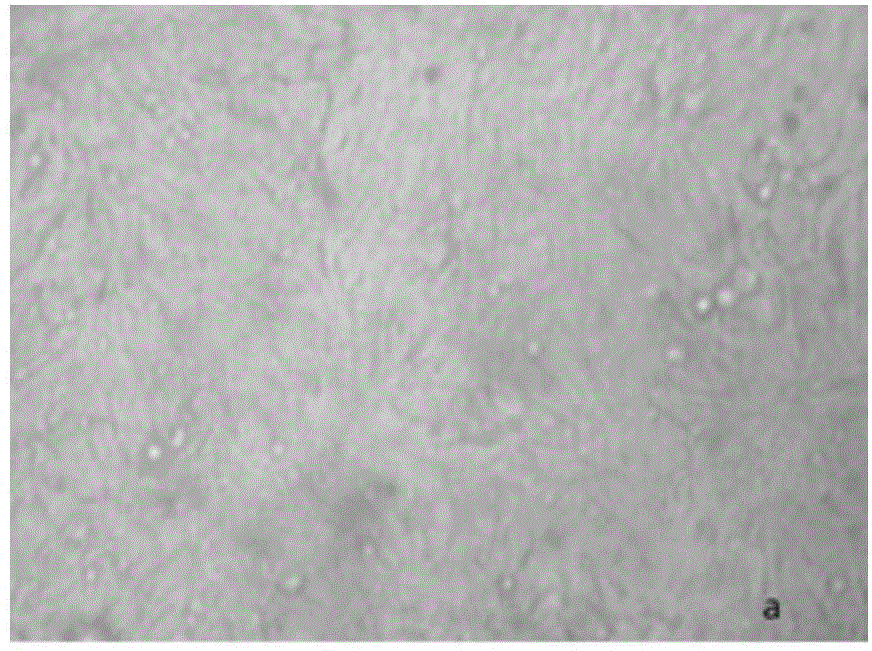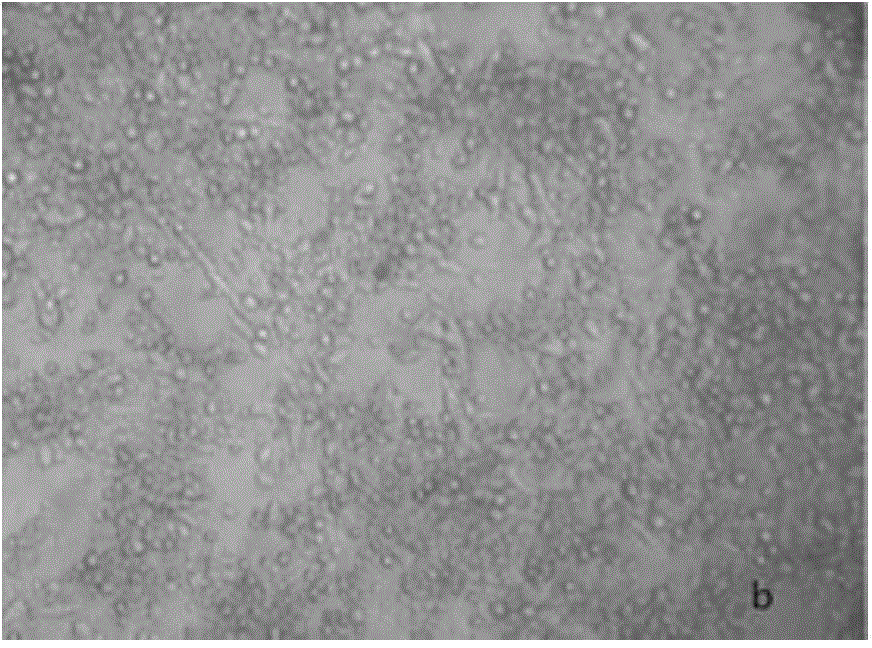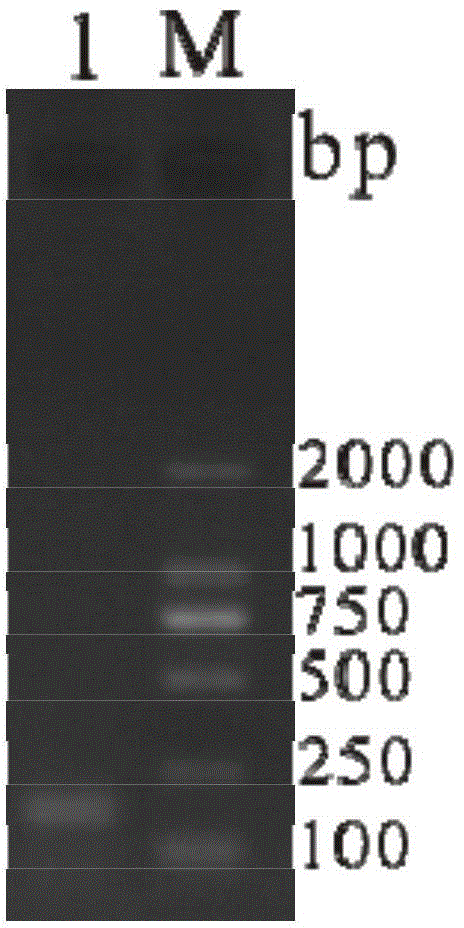RT-qPCR detection method and primers and TaqMan probe for detecting swine transmissible gastroenteritis virus N gene
An infectious and gastroenteritis technology, applied in the field of primers for N gene RT-qPCR of porcine infectious gastroenteritis virus, can solve the problems of low specificity, low general value of primers, low conservation, etc. High general value, high stability effect
- Summary
- Abstract
- Description
- Claims
- Application Information
AI Technical Summary
Problems solved by technology
Method used
Image
Examples
Embodiment 1
[0065] Example 1: Design and synthesis of primers and TaqMan probes
[0066] There are seven open reading frames (ORFs) in the TGEV genome, among which the N gene encodes the nucleocapsid protein, which is highly conserved. Taking the N gene of the TGEV PY-D strain isolated and preserved in our laboratory as the target gene, using molecular biology software to compare and analyze it with the gene sequence published on GenBank, design the upstream primer TGEV-P1, downstream primer TGEV-P2 and The sequence of the probe TGEV-Probe is shown in Table 1,
[0067] Table 1 Primers and Probes
[0068] serial number
[0069] In a further scheme, the fluorescent reporter group labeled at the 5' end of the probe is FAM, the fluorescent quencher group labeled at the 3' end is TAMRA, and the probe is named TGEV-Probe.
Embodiment 2
[0070] Embodiment 2: the cultivation of TGEV
[0071] After the PK-15 cells were subcultured until they grew into a single layer, normal PK-15 cells such as figure 1 As indicated, the freeze-dried TGEV PY-D strain preserved in this experiment was diluted with DMEM and inoculated on PK-15 cells at 37°C in 5% CO 2 After 1 hour of adsorption in the incubator, discard the virus solution, add DMEM maintenance solution, and place it in the incubator again. After culturing for 45-55 hours, scrape the cells to harvest the virus solution after obvious lesions appear, and the cultured PK-15 cells are as follows: figure 2 shown.
Embodiment 3
[0072] Embodiment 3: the preparation of positive standard plasmid
[0073] 1) Preparation of cDNA
[0074] Viral RNA was extracted by AxyPrep Body Fluid Viral DNA / RNA Miniprep Kit (AXYGEN), or viral RNA was extracted by methods known in the prior art, and the extracted RNA was reverse-transcribed by a reverse transcription kit to prepare cDNA.
[0075] The RNA / DNA extraction kit and gel recovery kit can use AxyPrep Body Fluid Viral DNA / RNA Miniprep Kit and Gel Extraxtion Kit products from AXYGEN Company respectively.
[0076] 2) Target fragment PCR amplification
[0077] Using the cDNA prepared in step 1) of this embodiment as a template, and using primers TGEV-P1 and primer TGEV-P2 as specific primers, PCR amplification of the positive standard plasmid was carried out, and the PCR amplification conditions were as follows:
[0078] Use 25 μL reaction system: l0×Buffer 2.5 μL; primer TGEV-P1 1 μL; primer TGEV-P2 1 μL; dNTP 2.0 μL, Taq enzyme 0.15 μL, ddH 2 O 17.35 μL, cDNA...
PUM
 Login to View More
Login to View More Abstract
Description
Claims
Application Information
 Login to View More
Login to View More - R&D
- Intellectual Property
- Life Sciences
- Materials
- Tech Scout
- Unparalleled Data Quality
- Higher Quality Content
- 60% Fewer Hallucinations
Browse by: Latest US Patents, China's latest patents, Technical Efficacy Thesaurus, Application Domain, Technology Topic, Popular Technical Reports.
© 2025 PatSnap. All rights reserved.Legal|Privacy policy|Modern Slavery Act Transparency Statement|Sitemap|About US| Contact US: help@patsnap.com



